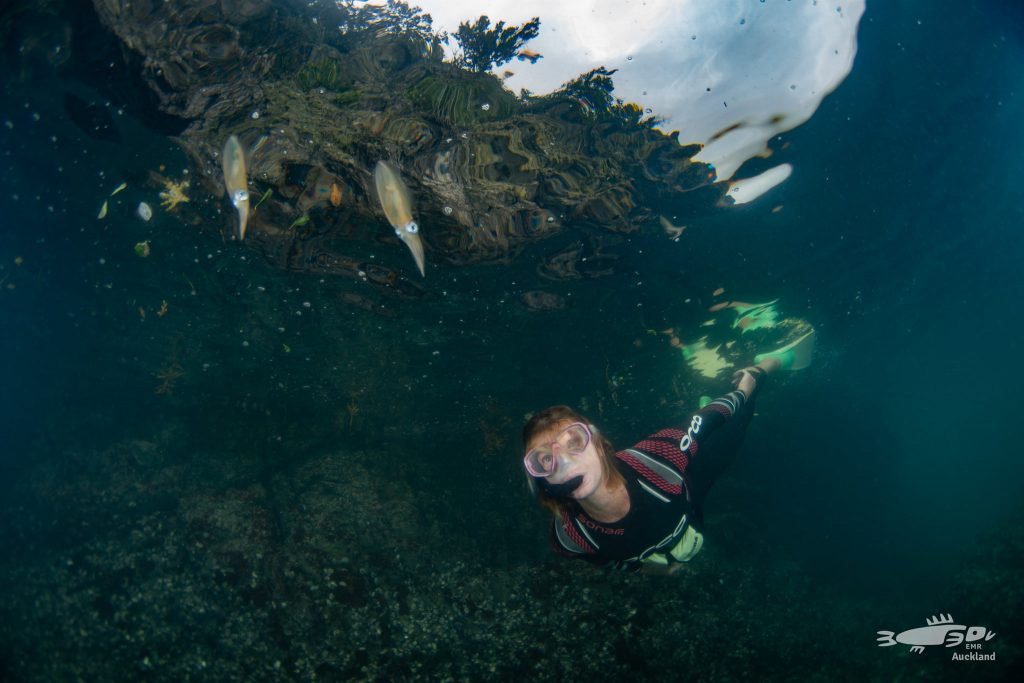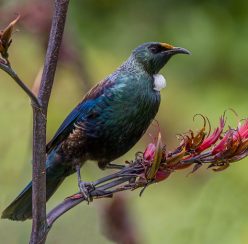I set off punishingly early in the silent pre-dawn of Rakino Island, wandering down to the wharf I passed three houses with their lights on. These folk were not early risers, something strange was afoot.
Nine of us turned up to catch a boat over to Ōtata, the largest island of Noises, a collection of islands to the northeast of Rakino.
I may have been overly keen as I’d squeezed myself into a wetsuit even before the boat arrived, sparking a conversation about the difference between ‘fitting’ and ‘appropriate’.

Steve turned up with the team from Experiencing Marine Reserves, some of them with diving gear to explore the Rakino coast, the rest to join the nine Rakinoites over to the Noises.
Sue Neureuter met us on the beach and told us a bit about the history and ecology of the Noises.
Captain McKenzie built a cottage on Ōtata and sold it to one Frederic Stanley Wainhouse, deputy harbour master for Auckland Harbour Board, who purchased the island group in 1933 for £200.
Wainhouse married Margaret Neureuter and they spent a significant amount of time living there during the second world war, keeping chickens and brewing their own beer. Now that’s what I’d call intrepid, living on an island in the Gulf with the threat of the Japanese navy in the Pacific.
The Noises have a long history of visitation and seasonal habitation by Iwi, and midden contents on Ōtata predating the eruption of Rangitoto is one of only two archaeological sites this early in the Auckland region.
Obsidian tools have been found there, fashioned from black volcanic glass, they can take a razor-sharp edge. Interestingly, most of the obsidian for tools came from Tuhua (Mayor Island) in the Bay of Plenty, and the top-quality raw material was traded far and wide.

The water was a balmy 23 degrees as we slipped in and began exploring the caves and chutes on the east side of the island. I’ve been snorkeling a bit around Rakino recently and, exciting though Rakino is, the Noises have a much larger diversity of marine species. One reason for this may be the interrelated nature of terrestrial and marine ecosystems. Ōtata is almost completely forested and home to many terrestrial species including numerous seabird species whose guano cycles back into the marine environment and contributes to fertilising the kelp forests which are home to many piscine denizens.
the highlight for me was a pair of friendly and inquisitive squid
It’s a great credit to the Neureuter family and also, I think, an inspiring example of what can be done. It is now 20 years since Rakino was rid of rats, with much more planting of native vegetation it could become a breeding ground for far more seabirds if only we’d stop stealing all their food.
We saw a fascinating variety of sea creatures, but the highlight for me was a pair of friendly and inquisitive squid, waving their tentacles and pulsing with rainbow colours.
After a terrific couple of hours in the water, Sue took us for a bit of a trek. Ōtata has never been cleared or farmed and it’s mostly pohutukawa dominant closed-canopy forest with very few invasive weeds. With no browsing mammals or rats, it’s also got a decent understory of many fern species and a wide variety of indigenous coastal plants.

Wandering back down the hill, in a world of my own, I strayed away from the group, took a wrong turn, and ended up on the wrong side of the Island. I only just made it back before the boat left, greeted by perplexed looks and the unspoken suspicion that a chap who managed to get lost on a 15-hectare island might very well constitute a mental health risk.
It was a fantastic trip. Many, many thanks to Experiencing Marine Reserves and the generosity of the Neureuter family.
Images courtesy of Lorna Doogan of EMR.

